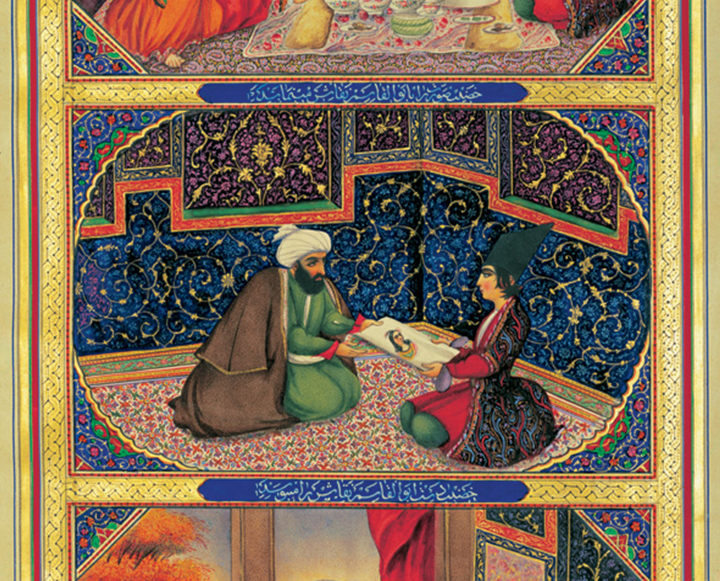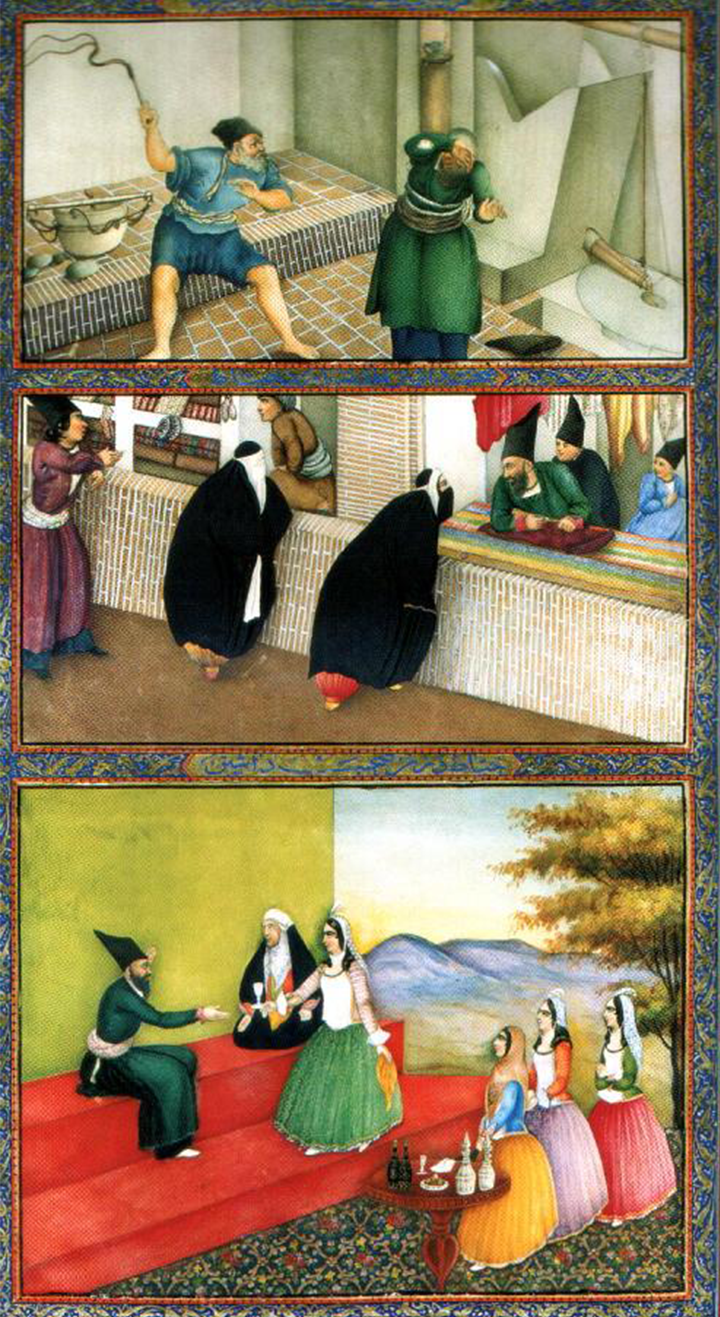Scheherazade: A Tapestry of Sounds
Scheherazade is a central figure in arguably the most famous collection of Middle Eastern tales, One Thousand and One Nights, also known as Arabian Nights. Aladdin, Ali Babba, Jafar, Sinbad—these are all familiar names that appear in these stories. But Rimsky-Korsakov gives his masterpiece the name Scheherazade. Being the master orchestrator that he was, he not only builds a tapestry of Eastern sounds using a Western orchestra, he also defines Scheherazade’s wisdom and incredible creative memory through his music. Take a look at some pictures and have a listen to how they inspired Rimsky-Korsakov’s most famous piece.
In this tale, Scheherazade breaks the gruesome habit of the paranoid ruler, Shahryar, who marries, then executes, a different woman every day. Scheherazade’s excellent storytelling and clever timing keeps here alive for 1,001 nights, at which point the Shahryar has fallen in love with, and weds, her.
Rimsky-Korsakov started work on Scheherazade while taking on the responsibility to complete an opera by his fellow composer and dear friend, Alexander Borodin, whose untimely death left the opera unfinished. Although what Rimsky-Korsakov absorbed cannot be proven for sure, here are some miniatures by the Iranian painter Sani ol Molk that he may have come across ...


Rimsky-Korsakov is remembered as one of the greatest orchestrators of all time. The sounds he created were like these paintings—colorful, mesmerizing and unique. Scheherazade in particular challenged him to blend instruments to not only create a whole new array of sounds but also emulate styles.
Have a listen to the famous opening, in which the combination of the solo violin and harp depict Scheherazade’s magical storytelling, heard by the spellbound sultan Shahryar:
Rimsky-Korsakov wrote this suite in four movements. Among the ones with famous story titles—“The Sea and Sinbad’s Ship” or “The Legend of the Kalendar Prince”—there is a movement dedicated to the love of “The Young Prince and The Young Princess.” Within the comforting orchestral sounds of love, Rimsky-Korsakov imbues these sudden “hot” flares—gestures of a passionate Arabian romance.
Have a listen to the solo clarinet smoothly execute these deliberately exotic-sounding scales:
A while after completing the work, Rimsky-Korsakov wrote, “All I desired was that the hearer ... should carry away the impression that it is beyond a doubt an Oriental narrative of numerous and varied fairy-tale wonders.” Don’t miss this magic carpet ride with the NJSO April 5–7!
Sarod & Scheherazade
2018–19 Season
XIAN ZHANG conductor
AMJAD ALI KHAN sarod (pictured)
AMAAN ALI BANGASH sarod
AYAAN ALI BANGASH sarod
NEW JERSEY SYMPHONY ORCHESTRA
-
AMJAD ALI KHAN Samaagam: A Concerto for Sarod, Concertante Group and String Orchestra (NJSO Premiere)
Samaagam means “confluence”; Western and Indian musical streams merge to propel this heartfelt, emotive work.
-
RIMSKY-KORSAKOV Scheherazade
Sumptuous and brilliant; like its fabled heroine from One Thousand and One Nights, Scheherazade captivates with tales of adventure and romance.
